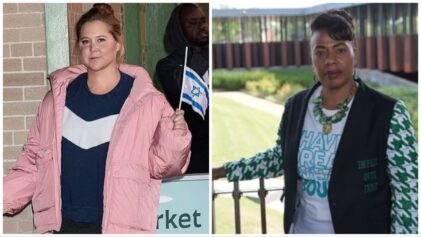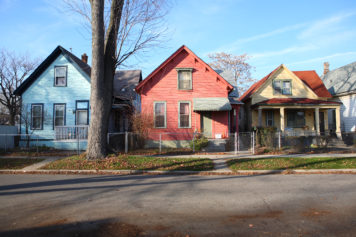
Dr. Martin Luther King Jr. (Wikipedia Commons)
Not long ago, I saw a comment on an online article about the rise in protests for Black civil rights. “We gave you a president,” wrote the commenter. “We gave you your damn Oscar. What more do you want?”
Nevermind the White House, what many Black people still long for is any house at all.
In 1966 at Chicago’s Soldier Field, Dr. Martin Luther King Jr. expounded on this dream. “We are tired of living in rat-infested slums,” he said. “Now is the time to make real the promises of democracy. Now is the time to open the doors of opportunity to all of God’s children.”
That door to opportunity is homeownership, which, for most Americans, is their single most valuable asset.
Yet more than half of African-Americans don’t own homes. A recent report by the Institute for Policy Studies highlights that only 41 percent of Black families are homeowners, compared to 71 percent of white families.
White people don’t own homes at greater rates because they picked themselves up by their bootstraps while Black people sat around. After the Great Depression, the federal government started subsidizing housing for white folks to help them get back on their feet.
Wealth inequality expert Chuck Collins, a co-author of the IPS report, explained on NPR’s Marketplace: “In the decade following World War II, our nation made unprecedented public investments to subsidize debt-free college education and low-cost mortgages. These wealth-building measures benefited millions of mostly white households.”
But if you weren’t white, you missed the boat. In fact, the report notes, just 2 percent of Federal Housing Administration loans went to nonwhite households in the years following World War II.
Meanwhile, discriminatory housing practices have held African-Americans back.
Throughout the 20th century, realty associations and discriminatory financial institutions conspired to disenfranchise would-be Black homeowners. Real estate agents, explains Morehouse professor Marc Lamont Hill, “followed an unwritten edict: Sell homes in white neighborhoods to Black buyers and you will lose your license.”
Even when some Blacks were beginning to successfully build wealth, it was taken away. Under President Franklin D. Roosevelt, “slum clearance” measures spread rapidly throughout the country, leading to widespread demolitions of Black middle-class homes. In the name of expanding public housing, many Black families literally lost the roof over their heads.
More recently, subprime lending has emerged as the most dangerous attack on African-American homeowners. Thanks to predatory mortgage practices, Black families lost three to four times as much wealth during the Great Recession as white families.
This may have been no accident. Federal investigations after the crash revealed that Wells Fargo loan officers referred to Black customers as “mud people” and called Black mortgages “ghetto loans.”
To reverse these trends, we need to create a housing boom for low-income and first-time minority homeowners, invest in financial literacy and career readiness programs and bring middle-class and high-wage jobs into newly developed Black neighborhoods.
“A society has a moral obligation to make a large, aggressive investment,” President Obama said recently, “in order to close those gaps” between Black and white Americans.
A truly “aggressive investment” would ensure not only equity for African-Americans in this country, but it also would expand middle-class America, reduce crime in America’s major cities and improve schools in urban communities.
Without that, Dr. King’s dream is still deferred.
Kenneth Worles Jr. is the owner of a progressive graphic design firm, 3i Design Group, and the Newman Fellow at the Institute for Policy Studies.


